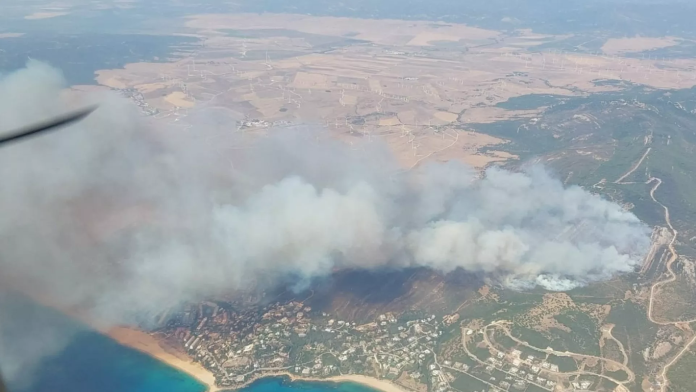Authorities in southern Spain ordered the preventive evacuation of over 2,000 individuals from the coastal resort area of Tarifa in Cádiz province as advancing flames and dense smoke threaten residential zones and tourist infrastructure, Euronews reported.
The emergency measure impacts beachgoers, local residents, and visitors near Playa de Atlanterra and Playa de Bolonia, with access to the region now restricted exclusively to emergency services. Antonio Sanz, interior minister of the Andalusia region, confirmed the operation is concentrated approximately 25 kilometres northwest of Tarifa’s city centre, where wildfires have exhibited alarming intensity.
This incident marks the second major evacuation near Tarifa within a week, following the displacement of 1,500 people from the La Peña area just days earlier. Precautionary measures now extend to the Montaña de Los Alemanes and Sierra de la Plata foothills, with staff and guests at the Cortijo and Meliá Zahara hotels also instructed to leave.
Guardia Civil officers directed evacuees toward coastal exit routes to prevent road congestion amidst deteriorating visibility caused by thick smoke.
The Tarifa fires contribute to Spain’s escalating summer wildfire emergency, which has seen tens of thousands of hectares consumed across the country. While Spain’s Ecological Transition Ministry reported 39,155 hectares burned nationally between January and early August, a 9% annual increase, broader EU data reveals a far graver picture.
The European Forest Fire Information System (EFFIS) indicates 353,862 hectares have burned across the EU this year, more than double the 164,967 hectares recorded during the same period in 2024. This has resulted in 11.45 megatonnes of CO₂ emissions, significantly exacerbating the climate feedback loop driving such disasters.
Firefighting operations in Tarifa involve over 100 personnel, including four specialised reinforcement brigades, supported by aerial water-bombing aircraft. The persistence of these blazes is attributed to extreme conditions, including temperatures surpassing 40°C (104°F) and persistent winds that rapidly spread flames.
These conditions align with the EU’s fire danger forecast, which identifies “extreme” Fire Weather Index (FWI) anomalies across Spain’s Iberian Peninsula and Mediterranean coast for the coming week.
The recurrence near Tarifa is particularly alarming, given authorities had declared a separate early-August fire, which charred 283 hectares, fully extinguished just days before this new outbreak.
